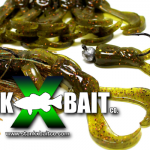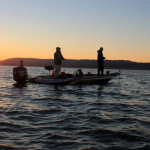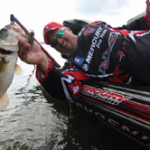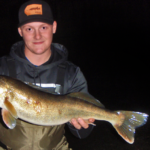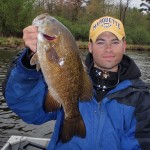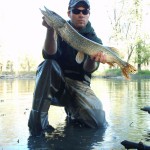By: Andrew Ragas – Date Posted: July 19, 2011
Who knew what you can do with a plastic frog? I began fishing with frogs in summer of 2008. Ever since then, frog fishing has become a favorite method for catching largemouth bass throughout all of summer. It’s hard to describe the adrenaline rush of setting the hook following a huge blow-up atop the surface.
The greatest benefit of frogs is how they can be effectively fished through mats of vegetation and the slop where big bass live. With the availability of several different models and designs from various tackle companies that sometimes call for specific presentations, I have come to learn that there is no wrong way to fish the frog.
Frogs are fantastic baits in heavy vegetation. Utilizing a surface-running soft plastic frog around lily pads and atop mats of slop is exhilarating as bass come out of the water to engulf the lure. The distinctive feature of frogs is that their hooks and riggings are weedless and there are no protrusions or sharp angles that can pick up vegetation. The fact that frogs are weedless, enabling anglers to fish them where nearly all other lures might fail, is their greatest advantage. In addition, their soft bodies are hollow and natural to the touch; allowing bass to hang on to the lure while anglers react to powerfully set the hook.
There are several different types of frogs on the market today. The surface frogs produced by tackle manufacturers are classified under two different groupings: hollow body and soft plastic.

Molded Hollow Body Frogs:
A hollow body frog is molded with either single or double hooks featuring silicone tails, and can be fished in both heavy vegetation and in certain open water situations. They are best fished by matching the hatch, and imitating the natural motion of how real frogs swim through the water, most often with fast short hops and long pauses. Frogs are more apt to pause against lily pads or other floating debris than just stopping and floating in open water. Thus it is important to observe the behavior of live frogs and trying to imitate them. Some popular hard plastic frogs are made by Snagproof, Sumo, Scumfrog, River2Sea, and Spro.
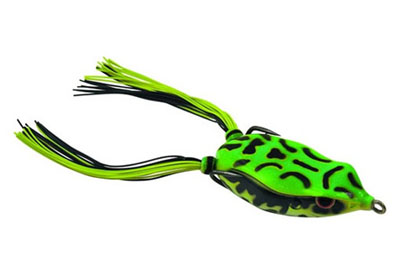
Soft Plastic Frogs:
Soft plastic style frogs are much more suited for open water and low vegetation applications. In these situations soft plastic frogs are best fished like buzz baits, and rigged weedless with a Texas rig. Some float and sink, while others can be buzzed and used to cover large expanses of water and search for numbers of fish. Some popular soft plastic styled frogs are Zoom Horny Toads, Sizmic Toads, Strike King’s Rage Tail, Stanley’s Ribbit, Stankx Bait Company Buzz Frogz, and the YUM Buzz Frog.
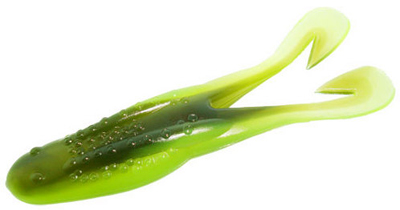
When and Where to Fish with Frogs:
Once you frog, the fun doesn’t stop. One local Northern Illinois angler who has turned himself into a frog fishing machine since early age is Jaypee Hey, of Chicago, Illinois.
Hey, 26, began fishing the frog during his teenage years and has since utilized frog fishing techniques to place well in regional tournaments such as the Anglers Choice and Bass Federation Nation circuits. Both of these circuits host events on Pool 13 of the Mississippi River, a favorite weedy big bass factory of his.
Hey recollects his first time with a frog, “I remember buying the original Snag-Proof frog in natural green just because it looked cool. I tried it on a local pond in the western suburbs and it worked. I was soon hooked on it thereafter.”
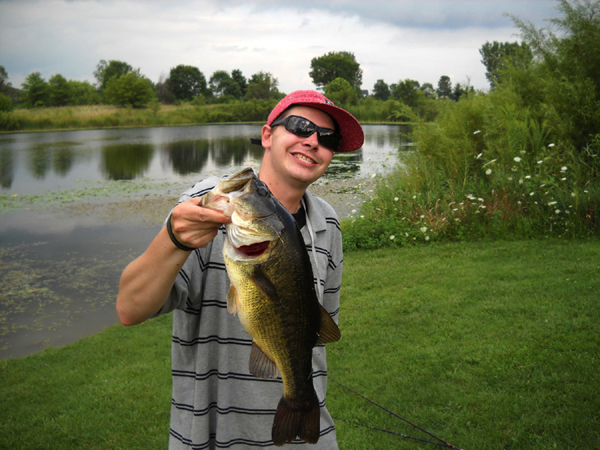
My first-time experience with frogs parallels his.
Starting in late May as water temperatures reach the 60 degree range, frog fishing is already in full swing throughout much of the Midwest. Fishing stays productive throughout all of summer and lasts up until the middle of September once water temperatures begin cooling in preparation for the fall.
Usually from midday to dusk and into the early nighttime is when frog fishing is at its peak. However, I have had success during dawn and early morning hours too, and some of my best and preferred fishing takes place on calm days when there is a lack of wind.
Frog fishing usually leads you and your boat into some pretty awful places that are generally inaccessible with the outboard motor. Typical frog water would be the shallow backwaters and bays of lakes and large grassy areas, especially with surface moss and algae growing on top. Other good water includes sparse grass, lily pads, overhanging trees and timber, and the dead ends of coves where emergent vegetation and debris has accumulated.
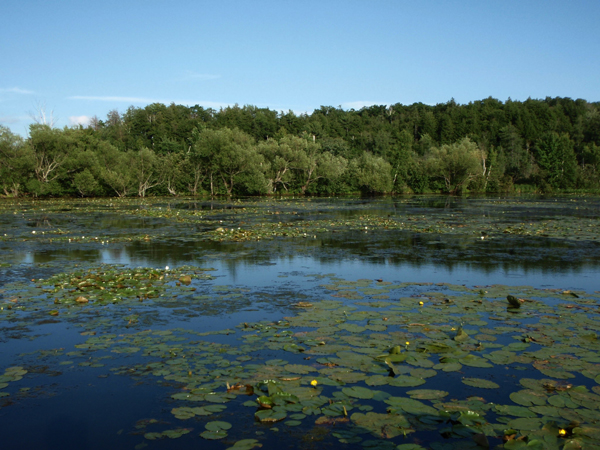
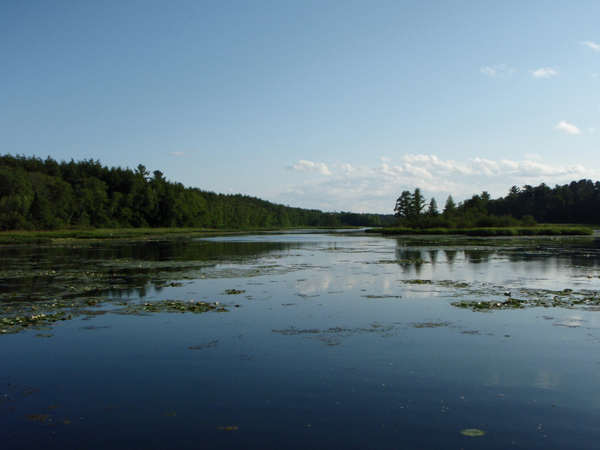
One important observation Hey has been able to make is that if bass elect to stay shallow during the daytime, it is critical to pay attention to the surroundings and the near-water feeding habits of other animals. Hey stresses, “Look for weed pockets and openings in the slop, pay attention to the activity of birds, bees, dragonflies, and listen for bluegills popping the surface.” He also adds, “I cannot tell you how many times I have had bullfrogs follow my frog lure back to the boat. Watch them if they are following you back and suddenly stop. It is for a reason; that frog knows that a big bass is lurking nearby!”
Likewise it is important to note that in order for frog fishing to be a success, there needs to be a sufficient depth of water under the cover, and access to deeper water so that fish can have a sanctuary to seek protective cover. According to Hey, adequate frog water “Must be more than a foot deep but always less than 8 ft. deep.”
Most anglers tend to wait until the hottest days of summer, when bass will be looking for cooler and shaded water in the mats, to begin throwing the surface frog. However, bass utilize shallow cover at any time of the year, depending on latitude. The point being is that anglers should not neglect the opportunity to fish with frogs, regardless of season, and neither should anyone have to wait until the dog days of summer to begin fishing this way. For me at least it seems as if bass are always in shallow water looking for cover and waiting for a meal to pass by.
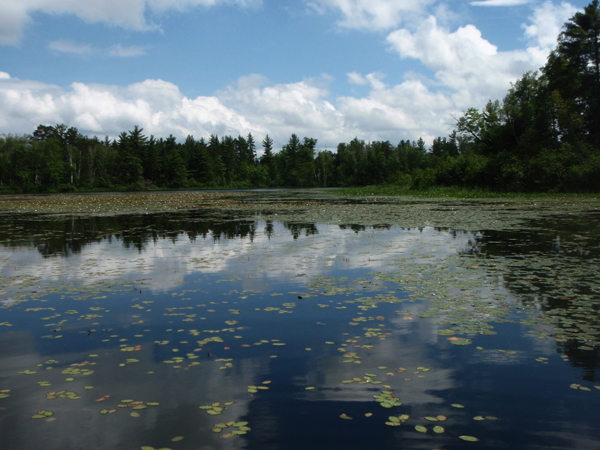
Frog Gear and Techniques:
Using frog lures is easy, but the challenging aspect of it is setting the hook and landing the fish.
The hook-setting process with frogs is much different than anything else anglers might be accustomed to. Hey lists an easy step-by-step procedure that ensures him landing most fish: “Get blown up; Lower the rod tip down towards water by as much as 45 degrees, let out some slack; Feel the fish; Give hard hook set; Fish successfully caught.”
If you have the right rod and reel, frog fishing is basic but if you are really into it like Hey or myself, it can become highly technical. The main thing to remember is that frog fishing requires a heavy duty rod and reel with braided line.
If Hey had to describe his style of frog fishing, it would be “Big bass froggin’, or methodical frogging. I like to use long heavy rods with a fast tip, along with a high speed baitcasting reel,” he says. According to Hey, “True frogging for me is done with a soft hollow body top water frog such as the Bobby’s Perfect Frog,” made by Snag-Proof and developed by Elite Series angler, Bobby Barrack.
Typically, experienced frog anglers use stout rods with heavy line to extract the fish from heavy cover. Monofilament lines in the 20 to 30 lb. class are sometimes used, but braided lines in the 30 to 80 lb. class have gained immense popularity in recent years and are a definite must. Superbraids have the ability to cut through the grass easily, keep surface frogs afloat, and give you a great advantage in hooksetting power.
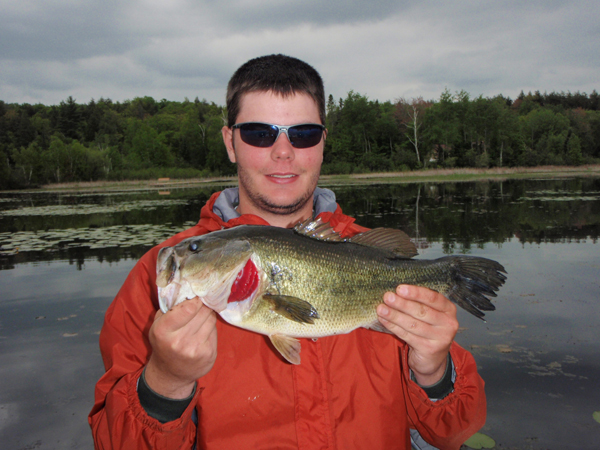
Most frog anglers prefer medium to fast gear ratio reels like a 6:3 to as much as a 7:3 for fast burning presentations to keep the lure consistently swimming, with the latter being a personal preference. Rods are generally long, from 7 to 8 feet in length with light tip and lots of backbone. The light tip is needed for long accurate casting while the stiff mid and butt sections of the rod easily set the hook and extract fish. Certain rod manufacturers today such as G-Loomis, Lamiglas, Quantum, Daiwa, and independent custom rod builders have designed and engineered rods specifically for this style of fishing.
Usually when we hit the water, I always bring three different set-ups into the boat and each is rigged with a different type of frog application. Each rod has a specific length and heavy action while the reels are all equipped with at least 40 lb. braid and a fast 7:0 gear ratio.
In order to be efficient, I have come to find that you can cover a lot of water effectively with three different frog styles.
My primary frog fishing option is to cover water and find the fish. Therefore a kicking soft plastic frog such as the Stankx Bait Company Buzz Frog is effective for covering the outside edges and open water pockets of lily pads, grass mats, and surface moss. I usually cast past the targets and work with a moderately fast retrieve, preventing bass from getting too good of a look at it because they usually strike out of reaction to the surface commotion. With buzz frogs and covering water I use a custom built 7 ft. 2 in. Swampland rod paired with a Quantum Tour Edition TE 1170 (7.0:1 gear ratio) with 50 lb. Cortland Masterbraid.
The second frog option I use is a molded hollow body surface frog such as Spro Bronzeye Frog. Hollow body frogs tend to get struck from less aggressive bass that are waiting in ambush. In comparison with the buzz frogs, this frog stays in the strike zone much longer and produces crushing strikes. I recommend casting these frogs right up on shore and hopping them past weed pockets and lily pads with few intermittent pauses to aggravate bass. It is best not to throw it right on top of the spot you think bass are hiding. Always remember to give a few seconds to let the fish grab onto it before setting the hook. I fish hollow frogs with a 7 ft. 6 in. Quantum Tour Edition flipping stick paired with a Quantum Energy SS ES150HPT (7.3:1 gear ratio) with 50 lb. Cortland Masterbraid.
Finally, the third frog option I use is not a specific type of frog at all, but rather a follow-up rod. I mix and match different frogs according to conditions and fish activity, and primarily use it to follow up on a specific bass that fails to hook up with either of my first two options. I learned to utilize this concept through my years of musky fishing as it is important to always throw out a follow lure in certain situations when hook-ups fail and fish are frequently moved to boatside. For my throwback frogs, I use a 6 ft. 10 in. custom built Laimiglas fiberglass flipping stick paired with a Quantum Accurist AC1170PT (7.0:1 gear ratio) with 40 lb. braid.
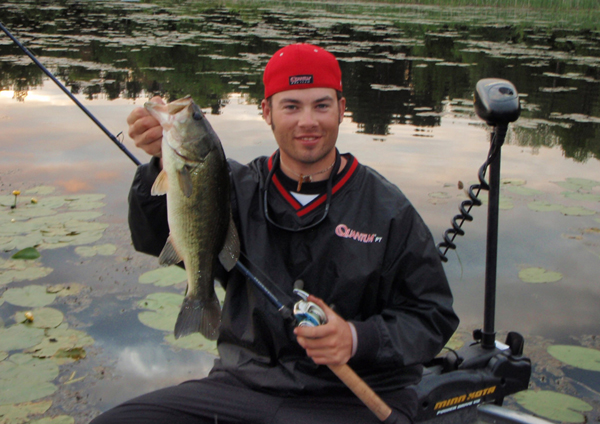
Color Selection:
As far as color selection is concerned, it remains a subject of debate amongst experts and experienced frog anglers. Since frogs are fished on the surface and through vegetation, anglers claim that color doesn’t make much difference. For me personally, it really doesn’t matter as I frequently use unnatural colors. My favorites are dark blues, yellows, and dark oranges.
Popular frog colors are those that match the hatch according to the frogs present near the water being fished. Black and white are most common frog colors, while brown, green, chartreuse, and other natural colors work exceedingly well. Hey endorses the concept of matching the hatch with his favorite color being a bluegill pattern, and states, “Yes, it helps a ton to match the hatch but the best plan is to use your mind in order to figure out the puzzle.”
Nowadays, more and more natural looking finishes are gaining popularity and seem to be catching more fish. Manufacturers have natural patterns currently on the market or planned for introduction, and some such as Stankx Bait Company is catering its soft plastic frogs to custom color and plastic density requests from anglers.
Once You Frog, the Fun Doesn’t Stop:

Bass in some bodies of water tend to respond better to plastic frogs more than others. In addition, some days of fishing are always better than others, therefore if fish aren’t showing any interest today, don’t give up . . . . Try again somewhere else.
The best aspect of frog fishing is that bass don’t need much encouragement to take down frogs. Once you start catching fish on the frog, you will look forward to frog fishing every year. You owe it to yourself to give it a try.
Jaypee Hey, 26, of Chicago, Illinois is an avid bass angler who is proficient in both frog fishing and jig fishing. For the past three years he has fished as an amateur co-angler in the Anglers Choice and Bass Federation Nation tournament circuits. His favorite big bass waters are Pool 13 of the Mississippi River and southern Wisconsin’s Delavan Lake. Hey can be visited online at his website, http://www.hiphopfishing.com




